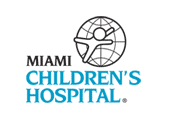|
Underwriter
|

NEED MEDICAL OFFICE SPACE? CALL (954) 346-8200 Ext. 201 __________________
|
|
Localized brain volume and white matter integrity in adolescent Anorexia Nervosa (AN)
| |
"The neurobiological underpinnings of AN are poorly understood" A study of 19 adolescents with AN (and matched controls) utilized magnetic resonance imaging to study grey matter and white matter volume, and diffusion tensor imaging to examine white matter integrity.
The brain of AN adolescents have similar volume and white matter integrity abnormalities as those found in similar adult patients. Larger orbital frontal cortex volumes may play role in the perception of unpleasant food tastes which may contribute to the food avoidance seen in AN patients.
Journal of the American Academy of Child and Adolescent Psychiatry
|
|
Serum lactate (LA) as a screening tool and predictor of outcome of patients with suspected infection
| |
Serum LA predicts mortality in adult septic patients.
A retrospective study of 289 patients, who under a sepsis protocol had clinical parameters, blood cultures (plus other blood studies) drawn and serum LA obtained concomitantly, was utilized to assess the severity of infection (predictable hospitalization and length of stay) in relation to serum LA levels.
Patients with suspected infection have high serum LA levels (2.36mM vs. 1.70/1.80mM) which correlate with increased pulse rate, white blood count, platelets, hospital admission, and length of hospitalization and is suggestive of disease severity.
Pediatric Emergency Care
|
|
Updates in Pediatrics is brought to you by:
|

______________
|
Underwriting Opportunities
|
With a circulation of over 4,900, Updates in Pediatrics offers an excellent opportunity to promote your brand at affordable rates.
|
|
|
Polyethylene Glycol for constipation
Constipation is a common problem and while no universal definition is available it is generally defined as hard, painful or infrequent stools (there is a wide range of normal). It is frequently associated with early toilet training, changes in diet, poor bowl habits (ignoring the urge to defecate), anal fissures, occasionally poor gut motility, inadequate water and fiber intake and lack of physical activity. Commonly used laxatives include milk of magnesia, lactulose and mineral oils.
Polyethylene Glycol, with and without electrolytes, is a relatively new laxative and following recent reports of excellent efficacy and safety, it is becoming the preferred treatment choice for long-term treatment of constipation in children.
Journal of Pediatric Gastroenterology
|
|
Nighttime sleep duration and externalizing behavior
Utilizing the Early Childhood Longitudinal Study-Birth Cohort of children followed from birth to kindergarten, data from approximately 8,950 preschool children was examined for nighttime sleep duration (parent reports), scaled and correlated with 6 different externalizing behaviors (over-activity, anger, aggression, impulsivity, tantrums and annoying behaviors).
In the USA, 4 year old children sleep on average 10.47 hours per night, go to bed at 8:39pm and wake up at 7:13am. Children sleeping less (by one standard deviation) are more over-active, angry, aggressive, impulsive and have more tantrums and annoying behaviors. (Short nighttime sleep duration is neither good for children nor their parents! Ed)
Journal of Developmental and Behavioral Pediatrics
|
Video Feature
 | | Anorexia and Bulimia - PWC Educational Film |
via YouTube
|
Short-term neonatal outcome after in-utero exposure to Serotonin Reuptake Inhibitors (SRI's)
A retrospective review of 401 infants whose mothers had received SRI's during pregnancy revealed that:
- Infants were shorter in length
- Had higher rates of 1 minute Apgar score <7
- Had a greater prevalence of meconium staining and respiratory distress
- 41% have at least one of the following: Jitteriness, restlessness, feeding difficulty, vomiting, fever >38C, a short cyanotic episode and seizures. While 70% had mild symptoms, 30% had significant symptomatology
Infants born to mothers receiving SRI's during pregnancy should be closely observed for 48 hours.
Neonatology
|
Severity scoring systems : valid/reliable and/or predictive of oxygen use in acute bronchiolitis
"Bronchiolitis is the most common respiratory tract infection in infants." Though frequently mild, bronchiolitis-associated hospitalizations are steadily increasing. Severity scores are commonly used to assess the severity of bronchiolitis.
A review of published papers utilizing a score to evaluate the severity of bronchiolitis revealed that the Tal and Modify-Tal Scoring systems (grading of respiratory rate, accessory muscle use, wheezing, cyanosis and oxygen saturation) appeared to most fully encompass clinically important parameters. These were then utilized to examine their validity, reliability and ability to predict in 115 bronchiolitis infants <2 years of age, the need for oxygen at 24 and 48 hours following diagnosis.
The Tal and Modify-Tal Scoring systems for bronchiolitis appear repeatable and are clinically reliable to assess the severity of bronchiolitis in infants. Oxygen requirements predictability is limited.
Pediatric Pulmonology
|
|
|